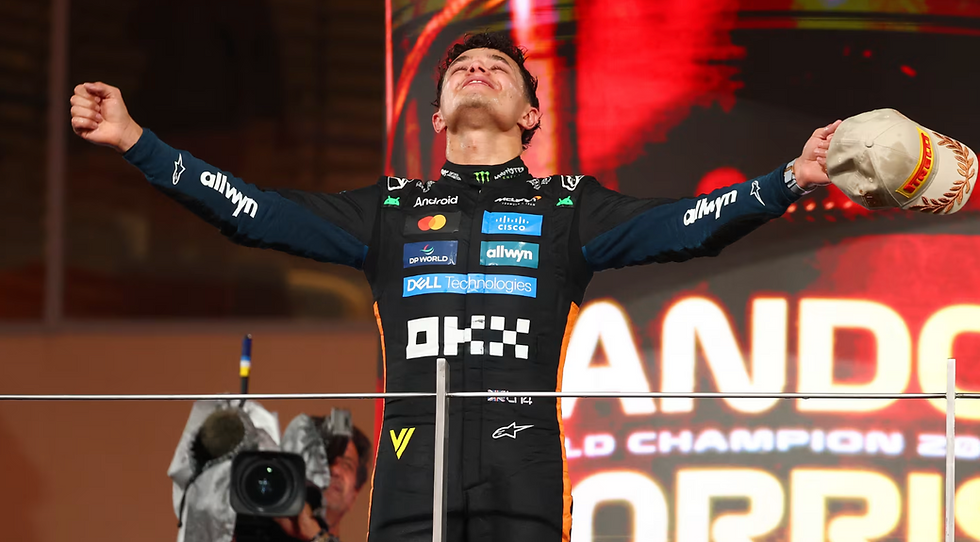W Series cut short; will the future of Formula 1 ever be female?
- Annabelle Spiers
- Oct 15, 2022
- 4 min read
Written by Annabelle Spiers, Edited by Ishani Aziz

W Series has announced that it would not be completing the final three races of its third season due to an inability to raise the required funds. The news means that Jamie Chadwick, who has been the dominant force all season, has been crowned champion for the third year in a row.
Despite its growing popularity, the curtailing of the season just goes to show how much more work is required for the female racing series to achieve the empowerment and equality set out in its mission statement.
The 2022 W Series championship was, as expected, a Jamie Chadwick masterclass. The series kicked off again in May at the inaugural Miami Grand Prix, and hopes were raised high, as the race gained plenty of attention. It was here that Chadwick started her title dominance, winning race one by just over three seconds despite plenty of safety car restarts, and race two by a nine second advantage. She continued in this fashion winning the next three races and coming second in Budapest. Perhaps the only moment of weakness displayed by the British driver came during what was to be her last race of the season: Singapore. Qualifying eighth meant a battle in the midfield and late braking in a move to secure sixth place resulted in Chadwick putting her car in the wall and her only DNF of the season. Despite this, Chadwick had still secured enough points to be crowned W Series champion for the third time, making her the only winner of the championship so far.
The champion reflected on her time at the series saying:
“It’s been life changing and I am so grateful to everyone that has been involved and supported me to this point. We all wanted to finish this season on track but I am very proud to be a 3x champion”.
Why then has the W Series had to cut its final three races? The season would no doubt have been thrilling, with Chadwick being only 50 points ahead of rival Bietske Visser, and fans would have seen an exciting championship battle. Ultimately W Series quote a lack of fundraising as the reason for losing races:
“Due to recent unforeseen circumstances outside of W Series’ control, we had not been in receipt of contracted funds due to us”.
The series was given a one-week deadline to raise the funds necessary to race in Austin and Mexico but after a planned deal with investors fell through they were required to remove the last races, instead focussing on raising funds to support the 2023 season.

The decision has been met with disappointment from both teams and drivers; third place Alice Powell described the decision as “gutting” whilst Chief Executive Officer, Catherine Bond Muir, described the “sadness and frustration” she felt by having to make the announcement. It seems to be a worrying step in the wrong direction for a series which, up until this point, had been making progress in gathering exposure. Its continuation as free to view on Channel Four makes it one of the most widely watched female sports and support has continued to rise. Muir remains positive, assuring fans:
“We are doing everything we can to ensure the long-term financial health of our business and we look forward to W Series’ continued growth and success.”
And yet, questions are still being raised over the longevity of the series.
W Series’ biggest shortcoming is the lack of progression it offers its drivers. Competitors race in a car that matches the specification of those in F3, yet there are currently no female drivers racing in F3. Even after winning three back-to-back titles and securing a place in Williams’ Driver Academy, Chadwick is yet to achieve a place in a higher series. Despite being created to support the female path to Formula 1, W Series is yet to achieve its much needed success story; if its three-time champion can’t progress up the FIA ladder then what hope do the rest of the competitors have?
What the W Series has really brought into question is the inherent sexism in Formula 1 that may not even be conscious. Chadwick herself has admitted she wonders if it will ever be possible for her to race in the top categories, simply due to the physicality of the sport. It is more than just the strength required to manoeuvre the car, it is things like the thick grip on the steering wheel not made for female hands, or the narrow cockpits which are not accommodating for larger hips. When cars themselves are built for men it leaves an all-women series with a monumental challenge if it wants to see an overhaul in racing to include women.

The achievements of the series cannot be overlooked despite this setback. Ultimately W Series has provided these drivers with the opportunity to race on the world stage in a fully funded race seat. Of course there is still more that can be done but it would be disheartening to see a series that champions those who lack opportunities be forced into an abrupt finish.
Realistically the series is still in its infancy and progress will be hard fought and slow. In an industry dominated by men, W Series is breaking a path for those who have been previously overlooked. With its future under question and the all important question of funds, it remains to be seen whether W Series will ever produce a female Formula 1 driver.







Comments